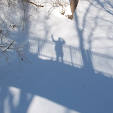A couple of weeks ago I received an e-mail inviting me to tour the almost completed phase one of the Premier Biosource facility north of Rensselaer. After watching this project proceed through regulatory hearings and going to the groundbreaking ceremonies, I was eager to go.
The facility will raise hogs for biomedical research. (For background, follow the two links in the above paragraph and this one.) The part of the facility that has been completed is phase one of four. Construction of phase two will begin in the next two months. When completely built out, the farm will have about 5000 hogs but this building is only designed for a couple hundred, and I believe that it will need the space in phase two to complete the raising of pigs.
The tours were scheduled on Monday from noon until 3:00 and I arrived about 1:30. I found the door locked and I had no idea how to get in. Fortunately, someone was leaving soon after I arrived and escorted me into the building and took me to a farrowing room where I joined the in-progress tour.
We continued down the hall, past a room on the north that will serve as a lab for testing and whatever else needs to be done and then into a group of rooms through which feed and other supplies enter. Items come into a first room where they can be fumigated. They are then moved to a second room where additional decontamination can be done. Feed enters the facility here and is transported to the pigs by means of pipes using augers.
The control for the door to the fumigation room is similar to the control on the door to the facility. It is operated by a card swipe. Only those with a card can open doors and the control system records who opened doors and when.
The tour continued with three people who had joined the tour after me. At the north side of the east end of the hallway was a storage room and the utility room. The utility room was dominated by a huge air handler. Air from the outside travels along the top going through two filters, the second a HEPA filter, and a heat exchanger. Air from the facility flows along the bottom, also going through a filter and the heat exchange. In the summer the heat exchange will take heat from the incoming air and transfer it to the outgoing air. In the winter it will take heat from the outgoing air and transfer it to the incoming air.
Several men were working on pipes in the room connected to two boxes that provide the heat for the entire complex and also supply the hot water. I was amazed that such small units, combined about the size of my home furnace, could heat the entire complex.
We ended the tour in the employee break room. One of the employee perks will be free meals. The provided meals are another measure to prevent contamination.
Leaving I went out the same way I came in but this time the passage out made more sense. Coming in I had to step over the edges of a shower room. I assume that each worker will have to shower and change clothes when they come to work.
Before I left I took a picture of the facility from the west side.
I will never again be allowed in the building.
(I saw a robin on Monday, the first one this year.)





1 comment:
Thank you for the interesting, informative "tour." I obviously won't be going there; so now I know what will be happening there.
Post a Comment